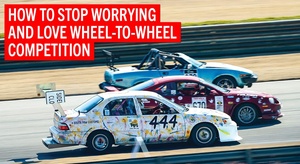You can click on the little x's and the popups go away.
Here's the story:
A Surprise man has designed a unit to convert gas-powered vehicles to electric vehicles
The conversion costs $10,000-$25,000, but creates savings in gasoline and maintenance
The business wants to install the technology in municipalities and companies with light vehicle fleets
Surprise resident Mitchell Yow has designed a green mode of transportation he's hoping will move Valley municipalities to change their entire fleets of vehicles.
Not to purchase all new cars and trucks, but instead buy a few parts that can be used to change a gas-powered vehicle to an electric vehicle.
Yow, co-owner of Torque Trends Inc. (torquetrends.com), recently designed the ev-Torque Box, a single-speed, reduction gear box, which helps vehicles to reach their peak torque right from a stop.
As a test car, he converted a 1999 Mazda Miata and showed it at a trade show in Las Vegas last December.
The process involved the installation of the ev-Torque Box, a motor and a battery pack for racing performance. The battery pack for a daily driving car is different from the one he used for the test car, he said.
"It's not terribly difficult, and it's no real new technology," said Yow, who received help with his endeavor from Arizona State University engineering students and the city of Surprise's technology business incubator, TechCelerator.
But, he said, vehicle manufacturers who have access to such a product don't make it available for conversions of gas-powered cars.
A master mechanic and former automotive and diesel instructor in Chicago and Indiana, Yow has worked in the industry for more than 30 years. In 2012, he moved from San Diego to Surprise to establish the startup company, which he co-owns with his wife, Grace.
The Miata conversion happened in his garage, and involved six months of prototypes, testing, redesigning and changes. Now, Yow is awaiting the delivery of the first 50 manufactured units that he plans to sell for vehicle conversions.
It's not always cheap, though that could change. A conversion can cost $10,000 to $25,000 and the 32-pound gearbox unit alone is $3,500.
"It's a numbers game," Yow said. "The more we build, the less expensive they are."
Yow said the benefits include the low maintenance needed for an electric car and that it doesn't wear out compared with the internal combustion engine of a fuel-based vehicle.
Conventional transmissions feature several forward speeds and, in automatic vehicles, include neutral, park and reverse modes. Over the past two decades, the number of forward speeds have increased in an attempt to squeeze more efficiency from the engine, according to his company's website.
Retaining a conventional multispeed transmission when converting to electric power is wasteful because weight and space are at a premium when a conversion is done. Thus, Yow's design uses a smaller, lighter transmission that simplifies the conversion of gas-powered vehicles, making the process more efficient and easier to install, he said.
"Most cars have six to nine forward speeds in their automatic transmissions, and they are very sophisticated, with lots of component parts and computer controls, while the transmission for an electric car doesn't shift; it's a single speed," he said. "And it doesn't have all the controls, the solenoids, valves and all the things that can go wrong."
The other beneficiary is, of course, the environment. According to Yow, there's a lower carbon footprint during electrification of an existing car rather than when building a new electric car from scratch.
"You're doing the right thing. You are not polluting, you're not supporting foreign oil. There are a lot of good reasons to do it," he said.
Abdel Ra'ouf Mayyas, assistant professor of automotive engineering at the College of Technology and Innovation at Arizona State University, said entering the e-vehicle market "is not as easy as someone would expect."
"There are a lot of competitors, there's been a lot going on in the industry, but, I think, the uniqueness or the strength of Torque Trends is producing the Torque Box, which is compact, lightweight and robust," he said. "So it has some really good advantages."
None of the larger West Valley cities have electric vehicles among their fleets, although many of them are starting to use environmentally-friendly transportation. Peoria has 10 hybrid vehicles in its fleet of 506, while Buckeye has just one hybrid vehicle. In both cities, the diesel trucks and engines run on biodiesel fuel.
The business plan of Torque Trends focuses on installing the technology in municipalities and companies with light-vehicle fleets. To that end, he is in talks with various municipalities, including Surprise, which may be his first client.
The technology works best when installed in a fleet of vehicles that have a fixed route or a low daily-mileage use, Yow said. The vehicles' battery packs would last the day and be charged at night. The batteries could be recharged thousands of times over their life period.
Ideally, Yow also wants to convert vehicles that have been in the fleet for some time. That way, the city would have maintenance records, mileage records on gasoline and the like, to enable before-and-after comparisons.
Despite the 22 types of plug-in electric vehicles currently available, only a small percentage are operating around the country, Yow said. But their day in the sun is coming, he believes. California, for example, has passed a rule that 9.5 percent of vehicles sold by a manufacturer must be zero-emission vehicles by 2020 and 22 percent by 2025.
"Other states are adopting it, too, and it will be countrywide soon," Yow said. "It's almost like a silent revolution."















_Nikola_Tesla_series.jpg/180px-0590(2)_Nikola_Tesla_series.jpg) than
than  ?
?





















